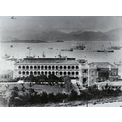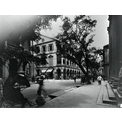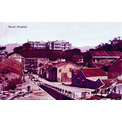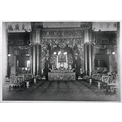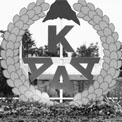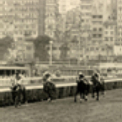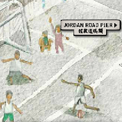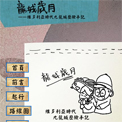 Collections
Collections Hong Kong, Benevolent City: Tung Wah and the Growth of Chinese Communities
Hong Kong, Benevolent City: Tung Wah and the Growth of Chinese Communities History of Tung Wah Services
History of Tung Wah Services Public Hygiene in Hong Kong and the Founding and Development of the Tung Wah Group of Hospitals
Public Hygiene in Hong Kong and the Founding and Development of the Tung Wah Group of Hospitals
1. Early Public Healthcare Services in Hong Kong
In 1843, the Hong Kong Government commissioned the Colonial Surgeon to monitor infectious diseases. That same year, the Seamen’s Hospital and the hospital founded by the London Missionary Society went into service. Added in number to the existing Royal Naval Hospital, Hong Kong possessed 3 small hospitals at the time. In 1850, the Government Civil Hospital was built. Initially, this facility cared mostly for civil servants and police officers. Later it also admitted members of the public in need of treatment but hospitalisation was charged at $0.50-1.00 per day. This was a fee that few Chinese people could afford. In 1858, the government established the Lock Hospital to treat patients with contagious diseases, whereas the Berlin Missionary Society set up a clinic below Morrison Hill that mainly served the Chinese community. However, the Chinese at the time generally resisted Western medicine, and usually sought Chinese medical advice whenever they felt ill.
As Hong Kong’s immigrant population surged in the 1860s, the mostly Chinese district of Tai Ping Shan became particularly overcrowded. Ventilation in the buildings was poor and the area lacked a sewage system. Consequently, the district was overwhelmed with infectious diseases. Some terminally ill patients were abandoned in the I-tsz and received no treatment at all. In 1869, Hong Kong’s English newspapers published fierce criticisms of the I-tsz, forcing the government to deal with the issue of healthcare services for the Chinese. The subsequent founding of the Tung Wah Hospital was indeed a huge step forward in the development of Hong Kong’s public healthcare services.
2. Founding of the Tung Wah Hospital
Tung Wah Hospital was built on crown land with funds donated by generous sponsors. With its foundation stone laid in 1870, the hospital’s inauguration ceremony was officiated by Governor Sir Richard Graves MacDonnell on 14 February 1872. In the same year, the government allocated another 2,000 British pounds (116,760 Hong Kong dollars) to pay for Tung Wah’s operating expenses.
The Tung Wah Hospital had 13 founding directors composed of merchants trading among China, Southeast Asia and North America, compradors and members of the gentry who had received Western education. Between 1872 and 1902, the hospital’s board of directors had 12 members. Each company would nominate a certain number of representatives based on their share of donations. Subscribers and kaifong (neighbours) would then elect the directors. The hospital also had a number of xieli (assistant directors) and zhishi (officers) who assisted in running the hospital. Zhengxin Lu (annual report) were published annually, reporting on hospital operations and listing all incomes and expenditures for the year.
According to the Chinese Hospital Ordinance enacted in 1870, Tung Wah was founded as a corporate body with funds largely received from public donations. All rules concerning the election of directors and appointment of xieli had to be submitted to the government and were subject to changes by the governor and Executive Council. Thus, Tung Wah was founded as a Chinese charitable organisation on the basis of Western law and subject to government regulation. These characteristics distinguished it greatly from traditional charitable bodies in the mainland.
3. Free Chinese Medical Services for All
In the mid-19th century, Chinese people generally resisted Western medicine and amputations in particular. Sterilisation technology had not quite reached an advanced level of development and so patients often died as a result of postoperative infections. Needless to say, autopsies violated taboos of traditional Chinese culture, thus the majority of Chinese did not want to be treated in a hospital practising Western medicine. The Tung Wah Hospital was embraced as an institution by the Chinese community since it provided Chinese medical services, offered free treatment and medicine for the poor and helped families with funeral arrangements.
The Tung Wah Hospital had high recruitment standards for its Chinese medical practitioners and selected candidates by means of an examination. At the time, procurement of Chinese herbal medicine took up the largest share of hospital expenses. Government surgeons were, however, dissatisfied with the fact that Tung Wah exclusively practised Chinese medicine, and often unleashed harsh criticisms upon the hospital. After the plague of 1894, the Tung Wah Hospital succumbed to pressure from the government and agreed to employ a Western medical doctor. In the Kwong Wah and Tung Wah Eastern hospitals founded at a later time, Western doctors and medical equipment accounted for a larger proportion of hospital operations than before. The Tung Wah Group of Hospitals (TWGHs), however, defended its policy of providing Chinese medical services to the Chinese and continuously had to grapple with government pressure.
During the Japanese Occupation period, Tung Wah ran into serious financial difficulties and was thus forced to suspend its Chinese medicine in-patient and free Chinese medicine services in July 1945. After the war, Hong Kong was in desperate need of reconstruction, and Tung Wah no longer offered free Chinese medicine. It did, however, retain its Chinese out-patient services. In recent years, the Hong Kong public has paid increased attention to the development of Chinese medicine and the TWGHs has been a pioneer in the application of Chinese medical treatment.
4. Impact of the Bubonic Plague of 1894
A bubonic plague broke out in Guangzhou in 1894. In May of the same year, Hong Kong recorded its first fatality. By June, a total of 1,900 people had died from plague. The government imposed strong measures to control the epidemic including authorizing the Sanitary Board to allow government personnel to search the homes of citizens, quarantine families of the infected and sterilise their homes. In addition, the government passed a law allowing the demolition of buildings in plague-infected areas. Hong Kong was declared an infected area and people with plague were forbidden to leave the city. Meanwhile, those infected with the disease were sent to the hospital ship, Hygeia, the Kennedy Town Police Station as well as the Glass Works and old Cattle Depot. The government also sent surgeons into the Tung Wah Hospital to remove and transfer infected people to the floating hospital by force.
The Chinese were infuriated by many of these measures, mostly by the interdiction to leave Hong Kong and the government forcefully entering civilian homes. Tung Wah petitioned the government to allow the infected to return to the mainland for treatment. Governor Sir William Robinson initially refused, but as the infected population surged and after further lobbying by Chinese merchants, he eventually relinquished his position and agreed to let Chinese people return to their hometowns. Hong Kong’s English newspapers accused Tung Wah of instigating public resistance against the authorities causing tension to mount between the hospital and the government. At the same time, ethnic Chinese staged a protest at Tung Wah because the hospital allowed the government to forcibly remove the infected. These incidents had a negative impact on public confidence in Tung Wah.
5. Founding of the Anti-Plague and Anti-Smallpox Clinics
Although the government was displeased with how Tung Wah had handled the bubonic plague, it acknowledged the hospital’s role in the Chinese community and supported the founding of an anti-plague clinic. When the clinic went into service in 1898, its wards were housed in temporary sheds. The following year, Tung Wah obtained permission to expand the clinic into the Tung Wah Plague Hospital in Kennedy Town. Offering both Chinese and Western treatment, it was inaugurated in 1903.
Since the early years of its founding, Tung Wah inoculated infants and set up isolation wards to stop the spread of smallpox. In 1876, the hospital went as far as sending personnel to Guangdong province to vaccinate people against smallpox. By 1893, over 30,000 infants had benefited from Tung Wah’s service. In 1887, smallpox once again raged through Hong Kong, and the government asked Tung Wah to help vaccinate the Chinese population. Tung Wah sent personnel to places like Aberdeen, Shau Kei Wan and Yau Ma Tei to vaccinate residents. In 1907, Tung Wah established the New Street Smallpox Ward, while in 1910 the Tung Wah Plague Hospital in Kennedy Town was converted to an anti-smallpox hospital, namely Tung Wah Smallpox Hospital. Later, in 1911, the government set up the Yau Ma Tei Smallpox Hospital and appointed Kwong Wah to manage it. In 1938, the Tung Wah Smallpox Hospital was returned to the government to be converted into an infectious disease hospital. It was at that time that Kwong Wah’s management of the Yau Ma Tei Smallpox Hospital also ceased, marking an end to TWGHs’ infection fighting work.
6. Founding of the Kwong Wah Hospital
The Kowloon Peninsula became a part of the colony in 1860. By 1905, the Chinese population on the peninsula had grown to 73,473. In 1906, in accordance with the government’s proposal, Tung Wah planned the construction of a new hospital in Yau Ma Tei, which would later become the Kwong Wah Hospital. Apart from allocating crown land, the government also provided Tung Wah $30,000 for building costs as well as a $6,000 annual subsidy. Among the 18 founding directors of the Kwong Wah Hospital, many were former directors of Tung Wah.
The Kwong Wah Hospital was completed in 1911 with Governor Sir Frederick Lugard presiding at its inauguration. In the same year, the government promulgated the 1911 Expansion of Tung Wah Hospital Ordinance which stipulated that the Kwong Wah board of directors must be made up of Kowloon residents. This held true even though the hospital would continue to be managed by Tung Wah, whose board of directors controlled Kwong Wah’s finances. Later, when Tung Wah experienced funding shortages, the government handed over to Kwong Wah the management of the Tin Hau Temple in Yau Ma Tei, the Kwun Yum Temple in Mong Kok and the Hung Shing Temple in Tai Kok Tsui so that revenues from the temples could help cover hospital expenses.
The design of the Kwong Wah Hospital afforded the wards plenty of light and good ventilation. It was equipped with various Western medical facilities such as operation theatres, a pharmacy and consultation rooms. The government subsidised the hospital by offering free Western medicine to patients in an attempt to promote Western medical practices.
7. Founding of the Tung Wah Eastern Hospital
By the 1920s, Hong Kong Island’s population had increased to nearly 350,000. At that time, many warehouses and industrial establishments were located in Wan Chai, an area with a high concentration of Chinese residents. In 1921, a group of compassionate sponsors in Wan Chai set up the Chap Sien Hospital. They later turned to Tung Wah for help due to lack of funding. The government was eager for the founding of a Tung Wah hospital in Eastern District, and thus urged Tung Wah to take over Chap Sien Hospital. The authorities even raised $450,000 for the hospital’s construction and operation. After many twists and turns, it was decided that the Tung Wah Eastern Hospital would be built in So Kon Po. The hospital was inaugurated by Governor Sir Cecil Clementi in 1929. This was Tung Wah’s second expansion project launched with government support following the founding of the Kwong Wah Hospital. This fact strongly suggests that Tung Wah’s medical service offerings had been acknowledged by the government and members from all strata of society.
Western in style, the architecture of the Tung Wah Eastern Hospital underwent expansion in the 1930s when Western medical equipment was added. The hospital had two Western medical practitioners, a delivery room and wards dedicated to treating children, tuberculosis, and a specialist ward to help opium addicts overcome addiction. It ranked first among the three Tung Wah hospitals in terms of scale and equipment.
8. Expansion and Amalgamation of the Tung Wah Hospitals
After assisting with the building of the Kwong Wah and Tung Wah Eastern hospitals, Tung Wah Hospital grew substantially. Although Kwong Wah had a board of directors, its finances had been controlled by Tung Wah all along. In fact, its board was presided over by the Chairman of Tung Wah. Although it did not have its own directors, the Tung Wah Eastern Hospital was managed directly by Tung Wah which was responsible for staff recruitment and the allocation of funding.
In 1931, the government amended the ordinance for Tung Wah’s incorporation so that the three hospitals (Tung Wah, Kwong Wah and Tung Wah Eastern) were amalgamated. It was stipulated that the number of directors could not exceed 30 and an advisory board consisting of 15 members was to be added. Both boards, according to the ordinance, required a quota of Kowloon residents. This was the first time that the functions of the Tung Wah Group of Hospitals as a charitable organisation had been clearly defined in a legal document. Later, Tung Wah ran into financial difficulties and the government grasped the opportunity to tighten its control over the group. In 1938, the authorities proposed the establishment of the Medical Committee to weaken the directors’ influence and control over hospital operations. The government had wanted to abolish Chinese medical services at the Tung Wah hospitals but was forced to give up the plan due to strong opposition from its directors. Nevertheless, the three hospitals placed an increasingly greater emphasis on Western medicine in the years that followed and Chinese medicine in-patient services ceased to operate in 1945.
9. Nurse Training
In parallel to the Tung Wah Group of Hospitals ability to preserve its tradition of practising Chinese medicine, it also introduced Western nursing into its three member hospitals. In 1911, the Tung Wah Hospital hired its first carer. In 1922, a Nurses’ Training School was established at the Kwong Wah Hospital, marking the start of Tung Wah’s commitment to nurse training. In the early days, nurse training emphasised practical application of knowledge, and teaching took the form of apprenticeship. Trainees would learn patient care skills through observing doctors and senior nurses without any complementary lessons in theory. All single women who had completed basic education were eligible to apply to the Nurses’ Training School. In 1931, the government enacted the Nurses Registration Ordinance that required nurses to complete 3 years of basic nursing training in addition to practical training. Trainees were required to pass the Hong Kong Government Nursing Board Examination in order to be acknowledged as registered nurses. Trainees who failed the examination could only work as carers.
After the Second World War, the Tung Wah Group of Hospitals experienced a shortage in nursing staff, and therefore appointed well performing registered nurses as nursing instructors. Since 1961, the group has sent one nurse on an overseas study mission every year as part of its efforts to improve teachers’ quality. In 1959, nurses’ quarters and a training school were established at the Kwong Wah Hospital, providing standardised and centralised training of nurses for the three hospitals.
10. Post-War Development of Tung Wah Healthcare Services
After the Second World War, demand for healthcare services surged rapidly. In 1950, the government awarded the Tung Wah Group of Hospitals the site of the Home for the Lepers in Sandy Bay which was converted into an infirmary. Chronic patients from the Kwong Wah Hospital were moved to the Sandy Bay Infirmary so that hospital beds could be freed to meet demand for in-patient treatment. The infirmary was later transformed into its present status, the Fung Yiu King Hospital. In 1952, the board of directors decided to add two new wings to Tung Wah Hospital. Expansion work was completed in 1958. At the same time, the Kwong Wah Hospital, with its over 40 year-old facilities, was no longer able to satisfy the healthcare needs of Kowloon residents. The directors thus launched a redevelopment project for Kwong Wah in 1958 that was completed in 1965. The new main hospital block was 12 storeys high, offering a total of 1,500 beds. The new Kwong Wah Hospital also included a nurses’ training school and staff quarters. It was one of Asia’s largest and most advanced hospitals at the time. In the 1960s, Tung Wah established Wong Tai Sin Infirmary, the present-day TWGHs Wong Tai Sin Hospital.
In 1973 and 1984 the Tung Wah Group of Hospitals drew up two 10-year plans to further expand the Wong Tai Sin Infirmary, Kwong Wah Hospital and Tung Wah Hospital. In line with government healthcare policies, new diagnosis and treatment equipment were added while specialist Western medical services were proactively developed. These services emphasised treatment for patients suffering from cancer, diabetes and cardiac disease. Meanwhile, the TWGHs continued to offer Chinese medical services, working jointly with hospitals in mainland China and local universities to promote research in and education of Chinese medicine. The Hospital Authority was founded in 1990 and in 1991 the Tung Wah Group of Hospitals signed an agreement with the Hospital Authority on the inclusion of its five hospitals into the authority. Under the Hospital Authority’s management framework, Tung Wah’s board of directors continues to participate in hospital management through the newly established office of Medical Services Secretary and a majority of seats in each of the governing committees of Tung Wah’s five hospitals.
